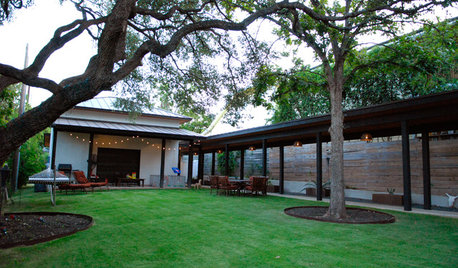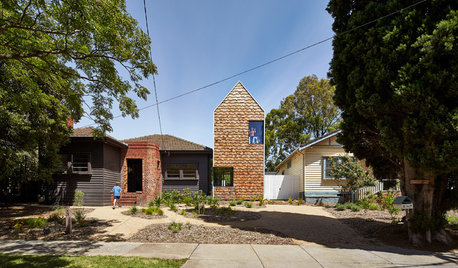when to start watering 1 year old trees?
Granite City Services
14 years ago
Related Stories

DECORATING GUIDESHow to Decorate When You're Starting Out or Starting Over
No need to feel overwhelmed. Our step-by-step decorating guide can help you put together a home look you'll love
Full Story
HOMES AROUND THE WORLDHouzz Tour: Personal Warmth in a 90-Year-Old Swedish Villa
A family outfits its 1926 seaside home with a mix of modern and traditional furnishings and a clear vision of home as sanctuary
Full Story
MODERN HOMESHouzz Tour: 800-Year-Old Walls, Modern Interiors in Provence
Old architecture and new additions mix beautifully in a luxurious renovated vacation home
Full Story
GARDENING GUIDESWhen and How to Plant a Tree, and Why You Should
Trees add beauty while benefiting the environment. Learn the right way to plant one
Full Story
CONTAINER GARDENSContainer Garden Basics: How and When to Water Potted Plants
Confused about soil moisture, the best time to water and what watering device to use? This guide can help
Full Story
TREESHow to Protect Your Trees When You’re Remodeling or Building
Will your home be undergoing construction this year? Be sure to safeguard your landscape’s valuable trees
Full Story
BASEMENTSRoom of the Day: Swank Basement Redo for a 100-Year-Old Row House
A downtown Knoxville basement goes from low-ceilinged cave to welcoming guest retreat
Full Story
MOST POPULARHouzz Tour: A Playful Home Drawn Up by 8-Year-Old Twins
Plans for this innovative tower home in Melbourne were going nowhere — until the homeowners’ twins came to the rescue
Full Story
KIDS’ SPACESThis Designer’s Client Was Her 10-Year-Old Son
What do you give a boy with a too-babyish bedroom when he’s approaching double digits? See for yourself
Full Story
GREAT HOME PROJECTSConsidering Wallpaper? Here's How to Get Started
New project for a new year: Give your room a whole new look with the color, pattern and texture of a wall covering
Full Story






fruitnut Z7 4500ft SW TX
berry-nut
Related Professionals
Arlington Landscape Architects & Landscape Designers · Glendora Landscape Architects & Landscape Designers · Piqua Landscape Architects & Landscape Designers · Aurora Landscape Contractors · Aloha Landscape Contractors · Bridgeport Landscape Contractors · Canton Landscape Contractors · Cedar Hill Landscape Contractors · Fishers Landscape Contractors · Kerman Landscape Contractors · Pikesville Landscape Contractors · Pine Hills Landscape Contractors · Post Falls Landscape Contractors · Siloam Springs Landscape Contractors · Wanaque Landscape ContractorsGranite City ServicesOriginal Author
Michael
fruitnut Z7 4500ft SW TX
Granite City ServicesOriginal Author
Michael
alan haigh
Michael
alan haigh